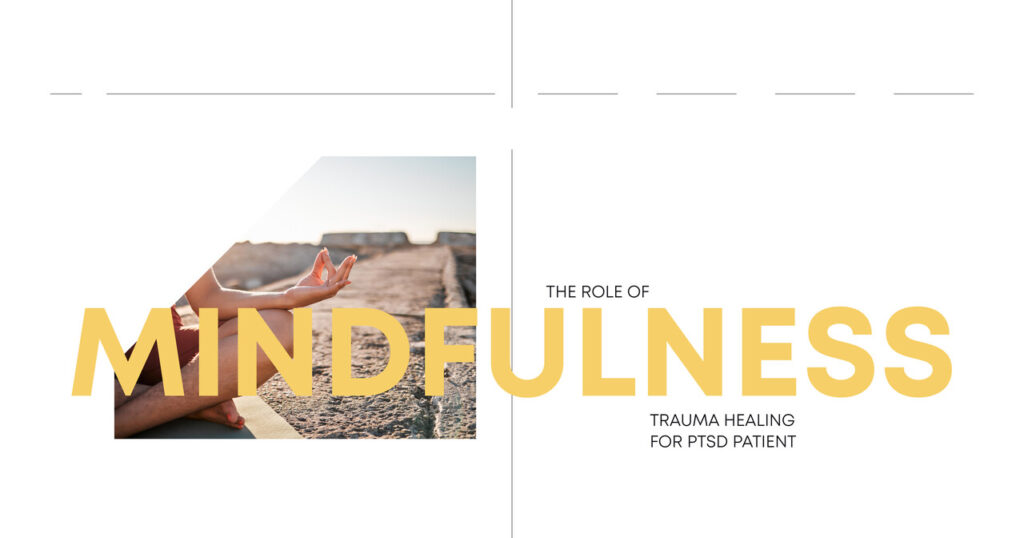Introduction
Post-Traumatic Stress Disorder (PTSD) is a serious mental health condition triggered by experiencing or witnessing a traumatic event. It often causes persistent distress and impairs daily functioning. While traditional treatments like therapy and medication are effective, integrating mindfulness practices has shown significant promise in enhancing trauma healing for PTSD patients. This guide explores the role of mindfulness in trauma healing for PTSD patients, detailing its benefits, techniques, and success stories.
Understanding PTSD
Shine Mental Health
What is PTSD?
PTSD is a mental health disorder characterized by intense and upsetting thoughts and feelings about a traumatic experience. Symptoms can persist long after the traumatic event, affecting quality of life and daily functioning. PTSD is commonly associated with severe and disturbing events such as natural disasters, sexual assault, domestic violence, and childhood trauma.
Common Symptoms of PTSD
- Intrusive Memories: Unwanted memories of the traumatic event.
- Avoidance: Steering clear of places, people, or activities that trigger memories of the trauma.
- Adverse Changes in Thinking and Mood: Includes negative thoughts about oneself, hopelessness, memory problems, and difficulty maintaining close relationships.
- Changes in Physical and Emotional Reactions: Symptoms include being easily startled, feeling tense or on edge, experiencing difficulty sleeping, and having angry outbursts.
What is Mindfulness?
Mindfulness is a mental practice that focuses on the present moment, acknowledging and accepting thoughts, feelings, and bodily sensations without judgment. It’s often used to reduce stress and enhance mental well-being. By fostering a greater mind-body connection, mindfulness addresses challenging emotions and responses associated with trauma, contributing to a sense of safety and emotional regulation.
The Benefits of Mindfulness for PTSD Patients
Reducing Stress and Anxiety
Mindfulness practices help reduce stress and anxiety by promoting relaxation and a calm state of mind. This is particularly beneficial for PTSD patients, who frequently experience high levels of anxiety and stress. Techniques such as deep breathing and mindful breathing enhance the brain-body-mind connection, supporting relaxation.
Improving Emotional Regulation
Mindfulness teaches individuals to observe their thoughts and feelings without judgment, which enhances emotional regulation. This is crucial for PTSD patients who may struggle with intense emotions. Mindful breathing and body awareness practices enable individuals to manage their emotional responses and process emotions more effectively.
Enhancing Self-Awareness
Mindfulness increases self-awareness by encouraging focus on thoughts, emotions, and physical sensations. This heightened awareness helps PTSD patients identify triggers and develop healthier responses. Techniques such as body scan and guided meditation facilitate this increased awareness, aiding in trauma recovery and symptom reduction.
Reducing Symptoms of Depression
Mindfulness techniques have been shown to alleviate symptoms of depression, which often accompany PTSD. By fostering a non-judgmental awareness of the present moment, mindfulness can help ease depressive symptoms, particularly for those dealing with trauma-related emotional issues.
Improving Sleep Quality
PTSD patients often face sleep disturbances. Mindfulness techniques like mindful breathing and body scans can improve sleep quality by promoting relaxation and reducing nighttime anxiety, which is crucial for those experiencing trauma-related sleep issues.
Effective Mindfulness Techniques for Trauma Healing
Mindfulness Meditation
Mindfulness meditation involves focusing on the breath and observing thoughts and sensations without judgment. Common practices include:
- Breath Awareness: Concentrating on the sensation of the breath entering and leaving the body.
- Body Scan: Paying attention to different body parts, noting sensations without judgment.
- Guided Meditation: Listening to a guided meditation to help focus the mind.
Shine Mental Health
Mindful Breathing
Mindful breathing focuses on the breath to promote relaxation and reduce stress.
- Deep Breathing: Taking slow, deep breaths to calm the nervous system.
- Counting Breaths: Counting each inhale and exhale to maintain focus.
- Box Breathing: Inhaling, holding the breath, exhaling, and holding again for equal counts.
Mindful Movement
Incorporating mindful movements such as yoga or tai chi can help PTSD patients connect with their bodies and promote relaxation.
- Yoga: Practicing postures with a focus on breath and body awareness.
- Tai Chi: Performing slow, deliberate movements to promote relaxation and mindfulness.
- Walking Meditation: Strolling while focusing on the sensations of each step.
Mindfulness-Based Stress Reduction (MBSR)
MBSR is a structured program that uses mindfulness meditation, body awareness, and yoga to reduce stress and improve mental health.
- Structured Program: Typically an 8-week program with weekly sessions and daily homework.
- Group Setting: Practiced in a group setting to provide support and encouragement.
- Variety of Techniques: Incorporates various mindfulness practices to address different aspects of stress and mental health.
How Mindfulness Enhances Traditional PTSD Treatments
Complementing Therapy
Mindfulness can enhance traditional therapy methods such as Cognitive Behavioral Therapy (CBT) and Eye Movement Desensitization and Reprocessing (EMDR). It helps patients stay focused and present during sessions.
- CBT: Mindfulness aids patients in observing thoughts and feelings, facilitating the identification and challenge of negative thought patterns. This is particularly useful in behavioral and psychodynamic therapies.
- EMDR: Mindfulness techniques help patients remain calm and focused during EMDR sessions, enhancing the processing of traumatic memories. Integrating bilateral stimulation can further support this process.
Enhancing Medication Effectiveness
Mindfulness practices can complement medication by improving overall mental health and potentially reducing the need for higher doses.
- SSRIs and SNRIs: Mindfulness helps manage anxiety and depression symptoms, enhancing the effectiveness of these medications.
- Sleep Aids: Mindfulness techniques can improve sleep quality, potentially reducing reliance on sleep medications.
How to Get Started with Mindfulness for PTSD
Finding a Qualified Instructor
When starting mindfulness practices, find a qualified mental health professional experienced with PTSD. Look for instructors with certifications in mindfulness-based interventions and a background in mental health issues. Trauma therapists and mental health professionals can offer specialized, trauma-informed care.
Setting Realistic Goals
Begin with small, achievable goals to gradually integrate mindfulness into your routine. Consistency is key to experiencing benefits.
- Short Sessions: Start with short mindfulness sessions of 5-10 minutes daily.
- Progress Gradually: Increase the duration and frequency of mindfulness practices as you become more comfortable.
Creating a Supportive Environment
Adjust your environment to support mindfulness practices and mental well-being.
- Quiet Space: Create a calm, comfortable space for mindfulness practices.
- Minimize Distractions: Reduce potential distractions to maintain focus during sessions. A supportive environment can enhance mindfulness effectiveness.
FAQs
Q: How long does it take to see the benefits of mindfulness for PTSD?
A: The timeline varies for each individual, but some people may notice improvements in mood and anxiety levels within a few weeks of consistent practice.
Q: Can mindfulness replace traditional PTSD treatments?
A: Mindfulness should not replace traditional PTSD treatments such as therapy and medication but can complement these approaches to enhance treatment effectiveness.
Q: What if I find it difficult to practice mindfulness?
A: It’s normal to find mindfulness challenging initially. Start with short sessions and gradually increase the duration. Consider joining a mindfulness group or working with a qualified instructor for additional support.
Conclusion
Mindfulness is a valuable tool that can significantly enhance trauma healing for PTSD patients. By reducing stress and anxiety, increasing self-awareness, and complementing traditional treatments, mindfulness practices offer a supportive approach to managing PTSD. Whether you’re dealing with anxiety, depression, PTSD, or seeking new ways to improve well-being, incorporating mindfulness into your treatment plan can lead to transformative results. If you or a loved one is considering mindfulness for PTSD, seek a qualified professional to guide you through this empowering journey.
Shine Mental Health
Empower Your Healing Journey with Mindfulness
If you or someone you know is dealing with PTSD, explore mindfulness as a complementary approach. The right support and tailored approach can make a significant difference in your mental health journey.







